Add Birding To Your Social Distancing Routine
By Alex Smolyanskaya
The coronavirus situation is developing rapidly, with frequent changes to government guidelines. Check local sources for updates before leaving your home.
Folks all over the Bay Area woke up last Tuesday under orders to shelter in place, with exceptions for essential trips. Fortunately, San Francisco guidelines state that outdoor activities on foot, bike, and even in a car are acceptable, even essential, for those at lower risk for complications, provided we practice social distancing.

If you’re new to spending frequent idle time outdoors, you may be wondering, what do I do out there? Sure, walking is nice, but some of us need #goals.
Enter birdwatching. No organized groups, gear, or travel required.
Nerdy hobby no more, birding (birds, verbed) is a way to connect to our environment and disengage from the anxiety-heightening stream of alerts, pings, and texts. Many find it meditative, with time spent outdoors having measurable benefits to those feeling isolated and lonely. At least one very biased source asserts that it’s the perfect activity for this time of social distancing.
As a paranoid pregnant person who has been social-distancing at home for over three weeks, I have found very needed respite in birding while roaming my neighborhood and local parks.
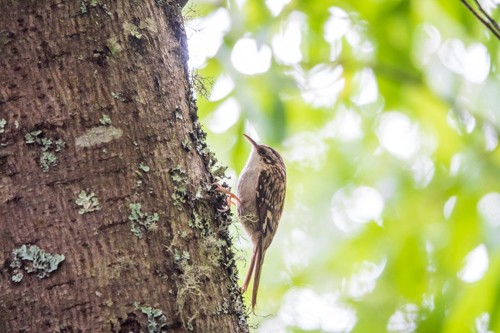
In my time organizing and leading walks for Golden Gate Bird Alliance and the San Francisco Feminist Bird Club, I’ve learned that most people do not identify with pop culture portrayals of competitive goofy mostly-dudes trying to hectically one up each other on how many bird species they can spot in an arbitrary amount of time.
Instead, most of us actually enjoy slowing down to observe common birds doing their thing — it’s the start of breeding season in the Bay Area, and that means birds at their most sexy… don’t you want to know? We enjoy seeing birds gather at yard feeders, the pleasure identifying any bird by sight or sound, or giving a nod to the daily pigeons and blackbirds who share our urban routines.
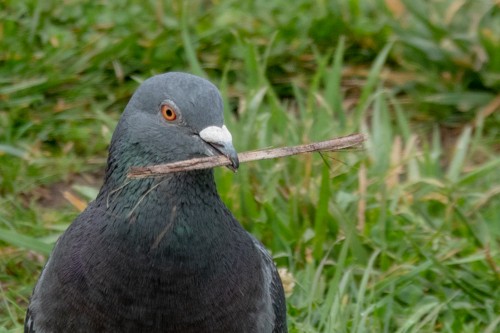
It’s your rules — you don’t have to identify any of the birds you find, you can give them whatever names you want, you don’t have to care about how many birds you saw, you don’t have to post your wins on social media, and you usually don’t need to go far from home. Just please act act ethically: respect birds’ space and avoid sounds or movements that grab their attention or cause stress. If you bring a dog, keep it on leash and on trails to avoid disturbing ground-nesters. And remember to keep 6 feet from other people, wash your hands regularly, and please don’t share optics right now.
So on to gear (if you decide to get some)…
Although binoculars of any size can be extremely helpful if you’re trying to literally watch birds (these make a great starter pair, I got mine from eBay), you can also focus on larger birds like those that hang conspicuously around shorelines and marshes.
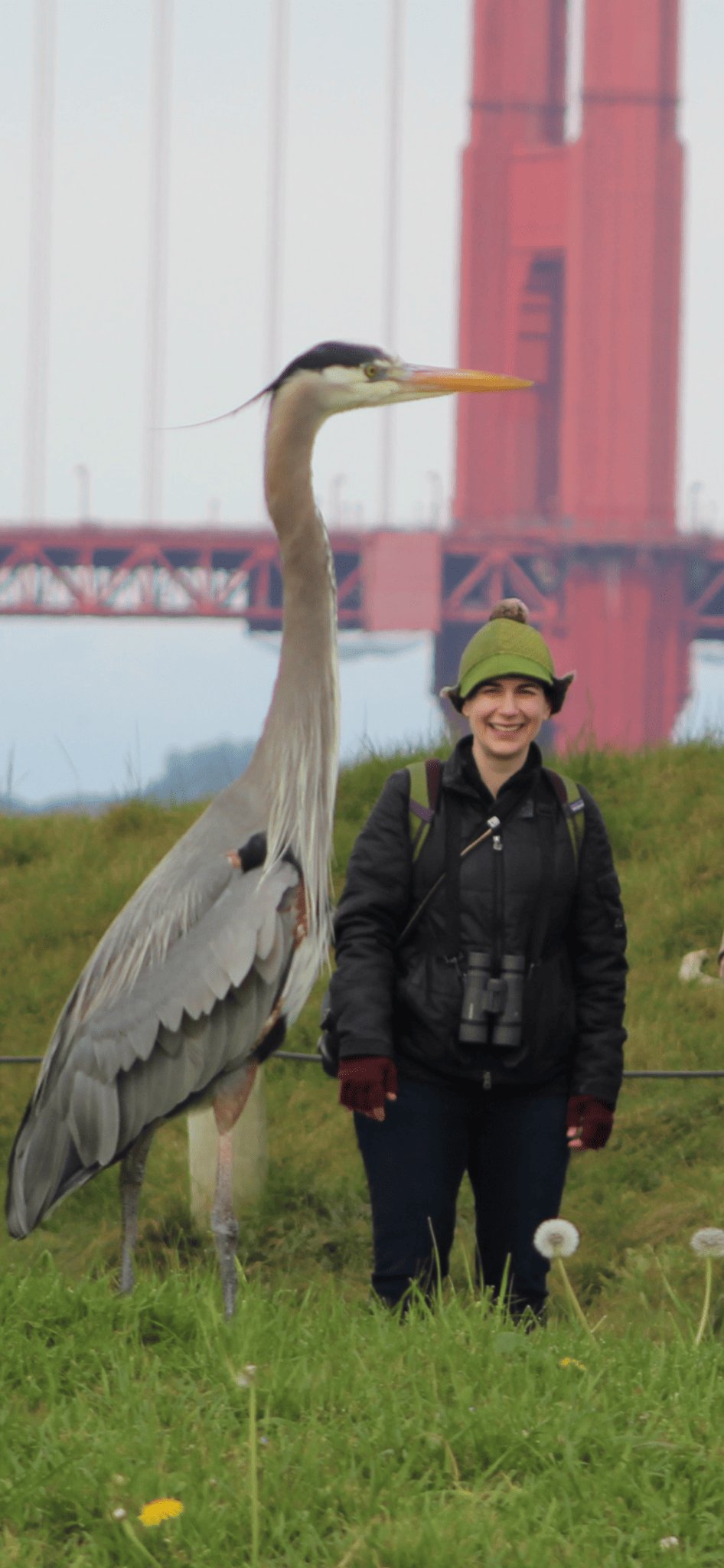
If you’d like to to stay in one spot, choose a safe, quiet green space near some shrubbery and songbirds will eventually emerge close enough to get a decent view. Look for subtle movement or sound among the plants. No need to provide food, which is prohibited in many public spaces.
I also find birding by ear to be extremely rewarding, which you may be able to do whether or not you can bird by sight. Start by trying to pick out a common song like that of ubiquitous White-crowned Sparrows or American Robins, who you can often see singing. Notice whether the song sounds the same every time or between individuals. Does the bird make any other sounds? Is there a situation in which they make a particular sound and not in others? Is a second bird of the same species nearby? Is it trying to be very sexy?
Yes, you can definitely tell.
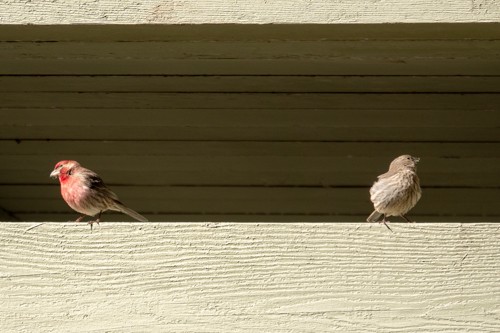
When my partner and I moved to San Francisco, we explored all spaces colored green on Google Maps in a widening circle around our apartment. We went to parks, playgrounds, community gardens, open spaces, and kept a lookout at fences and trees along our walk. Even those that seemed to lack promise sometimes turned up great finds, like a red-tailed hawk nest with noisy chicks teetering at the top of some trees near an urban playground.

If you want ideas for spots that are especially rich with birds (and popular with birdwatchers), check out eBird’s Explore Hotpots feature. Enter your location in the right search bar, and click around on colored markers — the warmer the color, the more species have been reported there. You can also use this to study up on which birds you might find before you get somewhere.

To stay closer to home, glance out a window near some greenery or look high up if you’re in a high-rise. Red-tailed hawks, gulls (of which there are over 10 species in the Bay Area!), crows, ravens, and even SF’s parrots, can easily be seen or heard out of most urban windows. Have you ever noticed how much crows and ravens like to play in the wind? Open the windows if you can to let in some spring birdsong, especially in the peak of morning daylight hours. A wander around the block will likely lead you to one or more species of sparrows, maybe some blackbirds, pigeons, or a hummingbird or two.
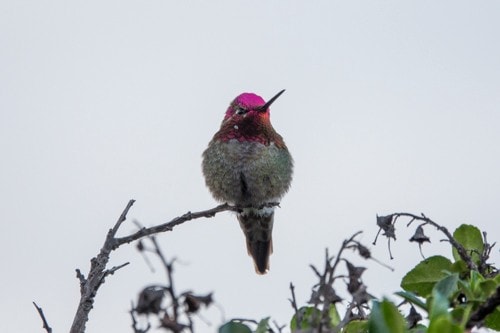
If you have access to a yard or the outside of a window, try putting up a feeder or two. Take this step responsibly, only if you can be sure to keep the feeders safe and disease free.
To pump yourself up before your outing, check out the excellent Birds of North America video series by Jason Ward.
If you want to start to identify things you see, there are several great apps that help beginners get started. My favorites include Merlin (free on Android and iOS), which lets you submit a photo or go down a choose-your-own adventure decision tree of bird characteristics to identify a bird, and iNaturalist (free on Android and iOS), which is best for plants and insects but also works with bird photos. You can use Merlin’s “Explore Birds” to learn which species to expect in your neighborhood.
For bird sounds, I like to have available an app that displays and records a spectrogram of ambient sounds via the phone’s microphone: I use SpectrumView for iOS. To identify a sound, you can listen to sound samples on Merlin if you know the candidate species, but few resources exist for identifying a sound recording from scratch. To address the pressing need, my partner developed Birdgram for iOS (free). It works great, but you might need to gain a little bit of experience reading spectrograms first, which SpectrumView and Birdgram enable you do in the field.
If you are able, I hope this brief intro helps you get outside and appreciating some birds. When the pandemic is over, you might even have a new hobby on your hands. If you do, folks at your local bird club will welcome you on our group walks with open arms and elbow taps.
I hope to see you out there! … but about 6 feet away.
Alex Smolyanskaya is chapter leader and co-founder of the San Francisco Feminist Bird Club and board member of the Golden Gate Bird Alliance. When not birding, she can be found doing data science in service of student equity in U.S. education. All photos in this blog were taken by Alex, with noted exceptions. This post is cross-posted from https://medium.com/@alex.
We want to feature your stories about birding during this crisis. Do you have a shelter-in-place birding story you’d like to share with us? Contact Melissa at mramos@goldengatebirdalliance.org with 800-1200 word testimonials. Wishing you joy and peace through birding.
